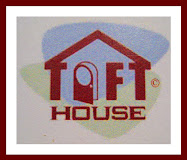The Cross Family Testimonial
After numerous doctors, medications, tests, and even surgery we were at a dead end with Cooper’s diagnosis. Cooper was diagnosis with Dysphagia three years ago, when he was almost two years old. Cooper had croup often (his count is about 12 times since his first time when he was one), however he had no underlining issues as to why he has Dysphagia. He is a completely happy, healthy, striving child. When we saw the Aerodigestive Clinic at Seattle Children’s last year, we were looking into a progressive approach as to why he was still on honey thickness at an age where kids typically grow out of it. We had his tonsils and adenoids removed, swallow studies every 6 months, allergy tests, sleep studies, medications, and MRI’s. Most doctors didn’t really know what to say.
We were worried that Cooper would be putting thickener in his beer when he became an adult! We joked about it, however his social interactions with food and drink were starting to become apparent. When other kids were able to have juice boxes, Cooper would have to have his thickened and in a different cup with a straw. No popsicles and ice cream. We made multiple trips to the urgent care in a year for his croup. I was frustrated and wanted answers. I wasn’t going to sit around and have my questions unanswered. I pushed to have Cooper be seen by the Aerodisgestive Clinic. Once we met with them, they urged us to have a feeding evaluation. Judith Simmons evaluated Cooper and recommended our family to see Lorioux at Clear Speech.
Lorioux is a game changer! Cooper started seeing her in the fall of 2015. Our entire family showed up for Cooper’s first appointment as we all wanted to see Cooper healthy. Lorioux jumped right in and fell in love with Cooper and wanted to see improvement. We were very anxious to see results, as we felt we were at the end of the road.
Within weeks, we noticed huge improvements. I loved to see how Lorioux would adapt to changes and try new things; chewy tubes, straws, whistles, and working his core, to make sure that Cooper would be progressing. EVERY week, we saw improvement. Cooper stopped coughing as often, which is a sign of dysphagia.
I would have to say the biggest change that we experienced was after Cooper completed Vital Stimulation Therapy. Although people were skeptical about the Vital Stim Therapy, we were willing to try it as Lorioux had seen great results in the past. His whole face changed! The way he ate, the way he held his neck tall and high, and he started a trial of 6oz of thin liquids daily after the therapy.
We are excited to say that Cooper is now getting the joy of drinking juice boxes like the other kids! He drinks at least 6oz of thin liquids daily. He has the confidence of a normal kid now. He doesn’t have to explain why he has to have liquids thickened. He doesn’t have to be the only kid in class with a special water cup because he has to have his thickened. We monitor him and make sure that he does “safe swallows,” a common phrase used in our home. Cooper has made it through fall, and most of the winter, without a trip to the urgent care for croup. That it self is HUGE! Lorioux, as I have said before, is a game changer. She opened up a whole new freedom for Cooper… the freedom that when he is 21, he won’t have to order a beer and put thickener in it (wink).




















